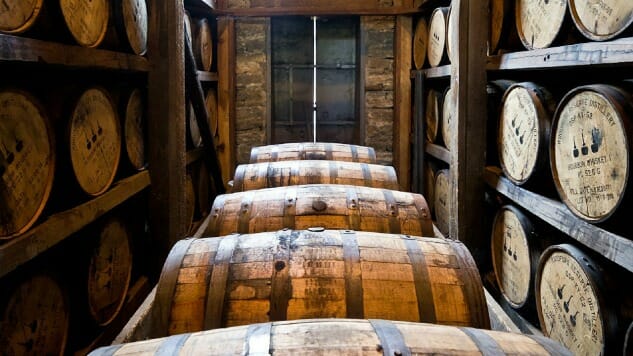
In our new Ask the Expert series, Paste readers chime in with some of their most pressing booze concerns, and we do our best to help you make sense of it all. Resident expert Jake Emen has spent years on the road traveling to distilleries across the country and around the world, and he’s here to help. Want your own question answered? Send a Tweet to him @ManTalkFood using #AskTheExpert.
Ask the Expert: What is whiskey made from?
Ah, the water of life. Whiskey. That magical elixir we all love so much and hold so near and dear to our hearts. What in the world is it made from? It only takes three magical ingredients to get the job done.
Water: It is the water of life after all. Can’t get around good old H2O. The qualities of the water itself can end up affecting the final outcome, for instance, as is the case with Kentucky’s famed limestone water supply.
Grain: The grains which make up a whiskey constitute its mash bill—so known because the grains will be mashed, i.e., steeped in hot water, before being fermented. Different types of whiskeys use different types of grains. For example, single malt Scotch consists of only malted barley, while bourbon must be made with at least 51% corn, and then can include other grains such as rye, wheat, and malted barley.
Speaking of fermentation though, that brings us to magical ingredient number three…
Yeast: We’d be so lost without the powers of yeast. These lovely microscopic fungi work whiskey wonders for us. They take the sugars from the grains—helpfully available after being converted from starches in the mashing process—gobble ‘em up and convert them into alcohol in the form of ethanol, as well as carbon dioxide.
After fermentation is complete, you’re left with the wash, or what’s commonly known as a distiller’s beer. It is beer—that’s right, whiskey is made from beer—typically with an ABV in the 7-10% range. It just hasn’t been flavored to be enjoyed as such, so while it’s entirely drinkable, it’s not quite delectable.
The wash is now ready to be distilled, and then voila, whiskey is born. But at this stage you have a white spirit that’s probably not too familiar to you in terms of flavor profile. So what gives?
It hasn’t been matured yet, of course, making the wood of the barrel another key component. Some would call it an ingredient, others would call it a tool or a process, but the impact of wood is undeniable, with most producers estimating that approximately 60% of a whiskey’s flavor is derived from maturation, not to mention its color.
From these simple three—or four—ingredients there is a limitless range of outcomes.
Have another question about how whiskey is made or defined? Ask away by tweeting @ManTalkFood with #AskTheExpert.
Jake Emen is a freelance spirits, food, and travel writer working diligently to explore the world’s finest offerings so he can teach you about them—how selfless of him. He currently resides outside of Washington, D.C. when he’s not on the road. Keep up with his latest adventures at his own site, ManTalkFood.com, or follow him on Twitter @ManTalkFood.